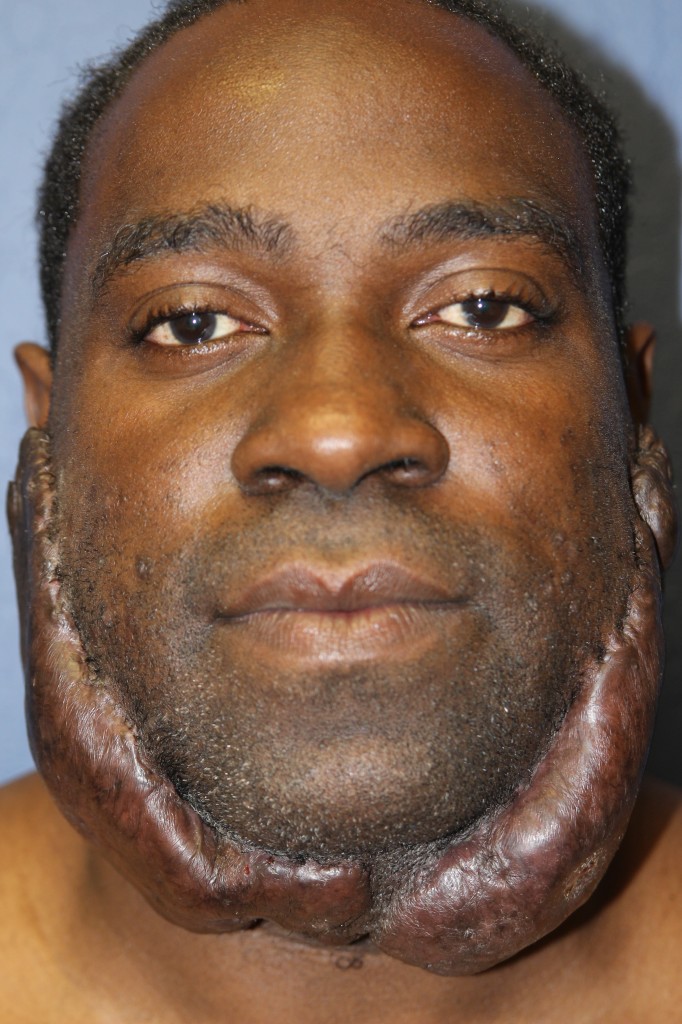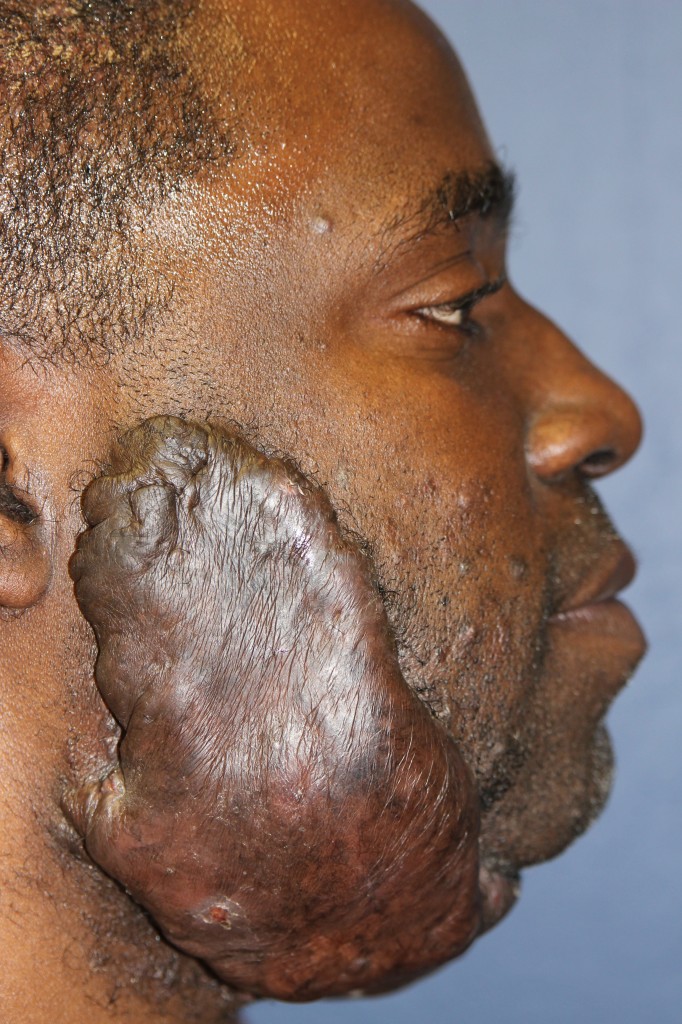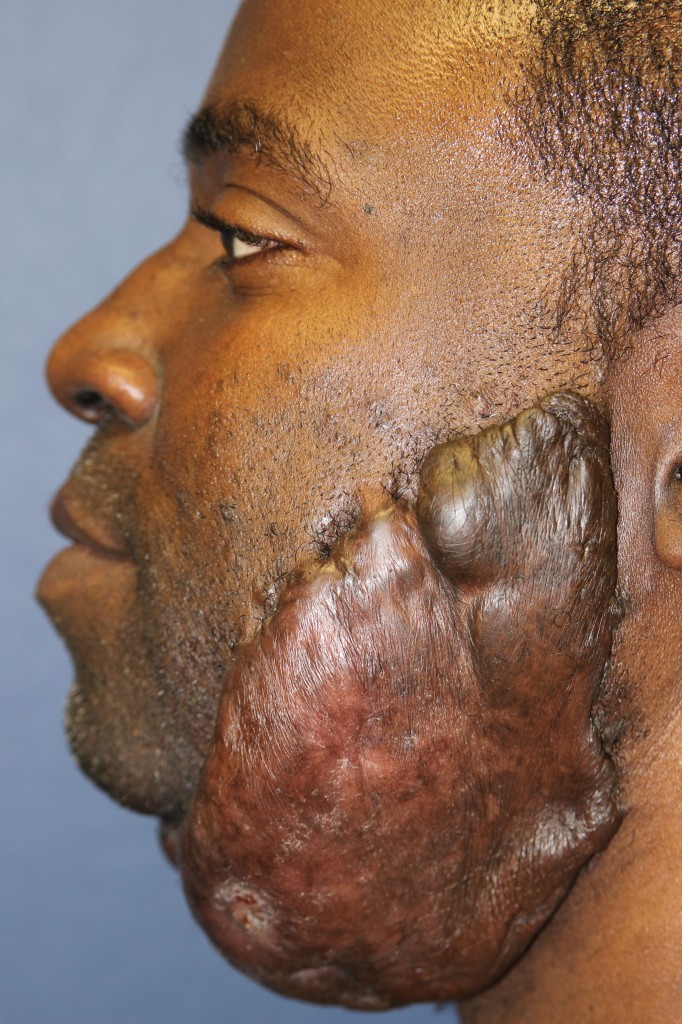In earlier blog postings, Keloids of the Earlobe: Treatment and Issues Regarding Recurrence and Recommendations For Effective Treatment of Keloids, I emphasized several important issues associated with keloids that MUST be addressed in order to have the best prospects for a cure and also to avoid the largely preventable situation of their evolving into colossal, deforming and symptomatic growths that dwarf their initial size. These included:
a) keloids have a high rate of recurrence which doesn’t necessarily occur immediately after treatment
b) the importance of their complete treatment which most often involves a combination of surgical excision and steroid injections with subsequent postoperative injections if clinically warranted; application of silicone gel and/or silicone gel sheeting long term where possible
c) the imperativeness of frequent and close long term follow up after their treatment to monitor for recurrence of the keloid
d) the not infrequent and often avoidable disastrous consequences of not having this type of follow-up.
I have had countless patients consult with me regarding treatment for their massively sized, problematic, deforming and recurrent keloids that had been previously “treated” by one or more physicians. Unfortunately, their prior treatments were incomplete or inadequate and there was little or no treatment or follow-up afterwards. Time passed by, the keloids continued to grow and for many reasons, the patient didn’t seek a re-evaluation from a plastic surgeon until the size of the keloids far dwarfed their initial size.
The following patient of mine dramatically illustrates the potential magnitude of the problem created when these tenets are not followed:
This 39 year old male developed a few very small keloids on his face around 5 years ago. These were surgically treated by two different surgeons involving three distinct operations over a period of time. He had virtually no follow-up after each of these procedures and he did not receive repeated steroid injections or have any other intervention. Each time that he sought treatment for a recurrence, the keloids were significantly larger than they had been previously.
He came to my office for his consultation with his face and neck tightly wrapped up with a scarf like garment (in over 100 degree weather) to cover-up his overwhelmingly sized, severely deforming, symptomatic keloid (see photos).
What started out as a few small lesions has devolved into an out of control, life altering, debilitating, massive and symptomatic deformity and growth which will require extraordinarily complex procedures that under the best of circumstances will still leave him with considerable problems. This situation could have been doubtlessly averted if only the proper treatments were instituted.
So, if you have a keloid and are seeking treatment, make sure that not only is the treatment adequate, but that you have the appropriate postoperative follow-up including judicious usage of steroid injections as warranted. Typically, I will follow-up my patients for around a year and a half as this is the period during which virtually all keloids would recur.
Take this seriously. If you blow off any needed follow-up for whatever reason or if you experience a recurrence but do nothing about it immediately – you are setting yourself up for major problems, deformities, inconveniences and otherwise unnecessary costs.
For more information on the treatment of keloids, scars or any other plastic surgery procedure that I perform, please call my office at 480-451-3000.
Steven H. Turkeltaub, M.D. P.C.
Scottsdale and Phoenix, Arizona



